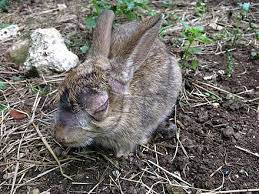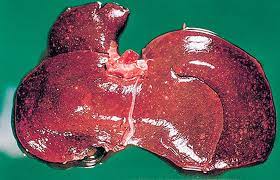
UNDATED – The Department of Natural Resources recently learned from lab results that rabbit carcasses found on private land in Elkhart County near Middlebury tested positive for tularemia.

Tularemia is a rare bacterial disease usually transmitted through dog tick and deer fly bites or by contact with an infected animal; however, the bacteria may also be spread by contact with contaminated soil or water, and through inhalation of contaminated dusts or aerosols.
While tularemia can be transmitted to humans, the Indiana Department of Health (IDOH) is not aware of any human cases of tularemia in the area at this time.

“Seeing a local die-off of rabbits during a tularemia outbreak is not unusual,” said Dr. Jennifer Brown, state public health veterinarian at IDOH. “You can prevent exposure to tularemia bacteria by wearing insect repellent and avoiding contact with sick or dead animals.”
According to IDOH, if people contract tularemia, they can be treated with antibiotics. Residents of the Middlebury area should seek medical attention if they develop fever or respiratory symptoms within two weeks of potential exposure to sick or dead rabbits, tick bites, or aerosols of dust, or to soil or grasses from mowing, raking, plowing, or similar activities.
According to the Indiana State Board of Animal Health (BOAH), pets are also susceptible to the bite of tick, flea or fly infected with tularemia. The bacteria can also be spread to pets by contact with water or soil that has been contaminated by an infected animal, by the bite from or consumption of an infected animal, or by the inhalation of contaminated particles.
Among other signs of tularemia infection, dogs and cats may exhibit anorexia, fever, depression, enlarged lymph nodes, and abscesses. If you suspect a pet has tularemia, contact a veterinarian.
Tularemia is found throughout North America. Other wildlife typically affected include rodents such as voles, squirrels, muskrat and beaver.
Signs of tularemia in wild animals include lethargy, ulcers, abscesses, and white lesions on internal organs.

Rabbit hemorrhagic disease virus type 2 (RHDV2) is another disease that is threatening wild and domestic rabbit populations. Although RHDV2 has not been found in Indiana, State animal health officials are watching for signs of RHDV2 to identify it early to prevent its spread.
The only way to differentiate RHDV2 from tularemia is by laboratory testing. Individuals who see otherwise unexplained die-off of wild rabbits should fill out the reporting form found on.IN.gov/sickwildlife. RHDV2 is not known to be transmissible to humans or other animal species.
For additional information see the DNR Division of Fish and Wildlife website, the Indiana State Department of Health website, or the Centers for Disease Control and Prevention website.



